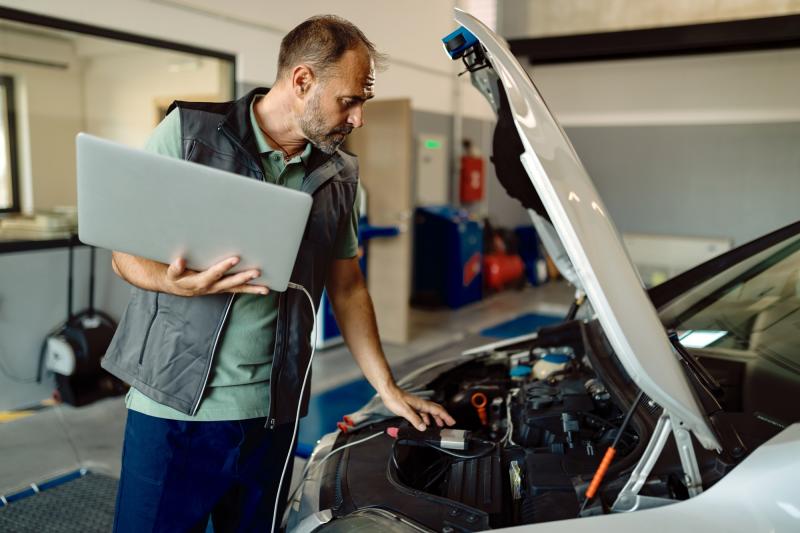Global Automotive LiDAR System-on-Chip (SoC) Market: Trends, Growth Drivers, and Future Outlook

The Automotive LiDAR System-on-Chip (SoC) Market is emerging as a key enabler in the development of autonomous driving systems, advanced driver-assistance systems (ADAS), and safer, smarter vehicles. LiDAR (Light Detection and Ranging) technology uses laser pulses to create high-resolution, three-dimensional maps of the environment around a vehicle. When integrated into a single chip, or System-on-Chip (SoC), LiDAR systems provide compact, power-efficient solutions for next-generation vehicles.
Understanding Automotive LiDAR System-on-Chip (SoC)
A System-on-Chip (SoC) integrates all components of a computer or electronic system onto a single microchip. In the case of LiDAR SoCs, this includes the laser source, sensors, data processing units, and other essential components required to generate and interpret LiDAR signals. Integrating LiDAR into an SoC reduces size, weight, power consumption, and cost, making it ideal for automotive applications where space and energy efficiency are crucial.
According to BIS Research, the automotive LiDAR system-on-chip market is expected to be valued at $29.3 million in 2024, which is anticipated to grow at a CAGR of 24.30% to reach $207.5 million by 2033 during the forecast period of 2024-2033.
Key Market Trends in Automotive LiDAR SoC
Growing Demand for Autonomous Vehicles:
LiDAR is essential for enabling Level 4 and Level 5 automation in autonomous vehicles.
Provides accurate 3D mapping and object detection for safe navigation.
LiDAR SoCs are compact and affordable, supporting mass-market adoption.
The rising interest in self-driving cars is fueling LiDAR SoC market growth.
Advancements in Solid-State LiDAR:
Solid-state LiDAR, with no moving parts, offers higher reliability and cost-effectiveness than traditional mechanical systems.
Solid-state LiDAR SoCs enhance durability, lower production costs, and simplify integration into automotive platforms.
This technology shift makes LiDAR more accessible to OEMs, accelerating adoption in the automotive sector.
Cost Reduction Through Integration:
System-on-Chip technology consolidates components on a single chip, reducing LiDAR system size and cost.
Lower-cost LiDAR SoCs enable automakers to include this technology in a wider range of vehicles, including mid-range and entry-level models.
Cost reduction through SoCs is a key driver of LiDAR’s adoption in consumer vehicles.
Focus on Power Efficiency and Miniaturization:
Compact, power-efficient LiDAR SoCs are essential for automotive requirements.
Power-efficient SoCs reduce energy consumption, beneficial for EVs with limited battery capacity.
These compact chips integrate seamlessly, supporting energy efficiency and extending vehicle range.
Request for a sample report on the automotive LiDAR system-on-chip market
Key Market Growth Drivers
Rising Need for Enhanced Vehicle Safety
Government Initiatives and Regulations
Expansion of Electric Vehicles (EVs)
Collaborations and Investments by Key Industry Players
Key Market Applications of Automotive LiDAR SoC
Advanced Driver-Assistance Systems (ADAS)
Autonomous Vehicles (Levels 4 and 5)
Smart City and Infrastructure Integration
Future Outlook for the Automotive LiDAR SoC Market
The automotive LiDAR SoC market is poised for robust growth as autonomous driving technologies evolve and LiDAR SoCs become more affordable. Key trends shaping the future include:
Expansion into Consumer Vehicles:
As LiDAR SoCs become more affordable, they are expected to expand from premium to mid-range and entry-level vehicles.
This shift will make advanced safety and autonomous driving features accessible to a broader market.
Development of Hybrid Sensor Systems:
Integrating LiDAR with other sensors, like cameras and radar, enhances perception accuracy.
Hybrid sensor systems enable safe operation in diverse environments, from urban traffic to rural roads, strengthening LiDAR’s role in autonomy.
Advances in Power Efficiency and Thermal Management:
Power-efficient LiDAR SoCs are essential for integration in electric vehicles, supporting long-term reliability.
Innovations in chip design and materials will boost power efficiency, extending EV driving ranges for models equipped with LiDAR.
Increased Focus on Edge Computing:
Edge computing is growing in automotive applications, reducing latency by processing data closer to the source.
Future LiDAR SoCs may integrate edge computing, enabling real-time, on-vehicle data analysis without relying on cloud processing.
Get more detailed insights on Automotive Market Research Reports
Recent Developments in the LiDAR SoC Market
In November 2022, Aeva Inc. expanded its presence internationally with the hiring of new teams in Germany, India, and Thailand, as well as the appointment of industry veteran Clement Kong to oversee sales in the Asia-Pacific region.
In May 2022, SiLC Technologies, Inc. collaborated with AutoX Inc., which is the leader in China's robo-taxi market, to deploy SiLC’s Eyeonic Vision Sensor for its fleet of robotic taxis.
In December 2021, indie Semiconductor, Inc. launched the Surya LiDAR system-on-a-chip (SoC) that provides advanced driver assistance systems and autonomous driving features.
Conclusion









Comments